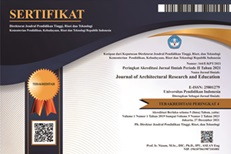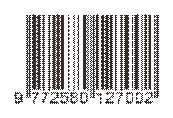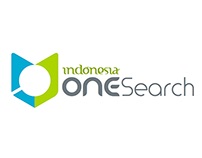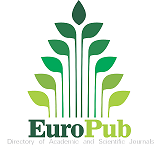FUTURE CITY BASED ON SMART MOBILITY CONCEPT: CHARACTER AND BENCHMARKING
Abstract
A city in overcoming its problem is defined as a smart product known as the smart city concept. Smart city has a conceptual definition as a city that is anticipatively able to manage resources in an innovative and competitive manner, with technological support in order to create a city that is comfortable and sustainable. One of the dimensions in smart city is smart mobility (transportation and infrastructure): Management of urban infrastructure that is developed in the future is an integrated and oriented management system to ensure alignments with the public interest. This study uses a critical review approach with a descriptive analysis method which is carried out by examining an urban problem in general and the theory of smart city through the search for ideas in the literature with the focus of this research is to define the character of smart mobility so that from defining the character, a solution is obtained about the indicator and expectations that are fulfilled to realize a city that has a smart mobility character. Through these methods, characters are generated from a smart city that is responsive, innovative and competitive. From these criteria produce a matrix to explain smart mobility consisting of aspects concerning aspects of less mobility, move freely, and less travel time. From the existence of the character and the matrix is finally cascaded to an indicator of the benchmarking toward smart mobility of a city.
Keywords – Smart Mobility, less mobility, move freely, and less travel timeFull Text:
PDFReferences
Cohen, Boyd. What exactly a smart city?. http://www.boydcohen.com/smartcities.html
Chris Ratekin. (2009). Green California Summit & Exposition : Transportation & Land Use Caltrans Smart Mobility Framework.
Hitachi. (2013). Hitachi’s Vision for Smart Cities. http://www.hitachi.com/products/smartcity/
Kourtit, Karima & Nijkamp, Peter (2012). Smart cities in the innovation age. The European Journal of Social Science Research, Vol.25, Juni 2012, 93-95. Routledge.
Iwan K. dan Nia K. Pontoh. (2009). Pengantar Perencanaan Perkotaan. Penerbit Institut Teknologi Bandung
Mitchell, William J.dan Casalegno, Federico. 2005. Rethinking the Paris Bus Line. Massachusetts Institute Technology : Smart Cities Group/MIT Media Lab Spring
Naashir. (2014). Smart City. https://naashir.wordpress.com/2014/11/07/smart-city/ (Diakses tanggal 22 Januari 2014)
Purnomowoti, Wiwin dan Ismini. (2014). Konsep Smart City Dan Pengembangan Pariwisata Di Kota Malang. Universitas Widyagama Malang : Jurnal JIBEKA no.8.
Robertas Juceviiusa*, Irena Patašien and Martynas Patašiusc. (2014). Digital dimension of smart city: critical analysis. Elsevier Ltd.
Schaffers, Hans. (2010). Smart Cities and the Future Internet: Towards Collaboration Models for Open and User Driven Innovation Ecosystems, FIA Ghent, “Smart Cities and Future Internet Experimentation”, December 16th 2010.Lazaroiu, George Cristian and Roscia, Mariacristina. 2012. Definition methodology for the smart cities model. Elsevier Ltd.
Sudaryono. (2014). Konsep Smart City untuk Kota-Kota di Indonesia. MPKD UGM
DOI: https://doi.org/10.17509/jare.v2i1.24112
Refbacks
- There are currently no refbacks.
Copyright (c) 2020 Gde Bagus Andhika Wicaksana

This work is licensed under a Creative Commons Attribution-NonCommercial-ShareAlike 4.0 International License.

This work is licensed under a Creative Commons Attribution-ShareAlike 4.0 International License.








